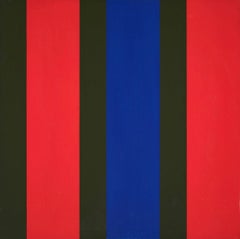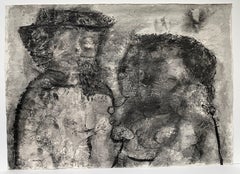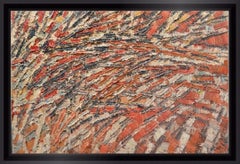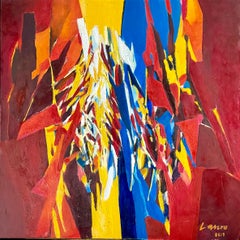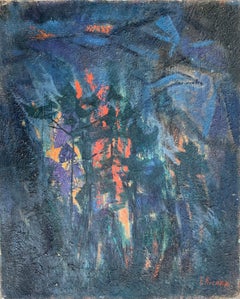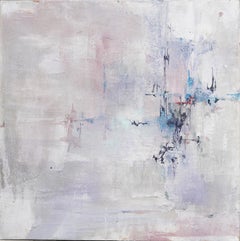Abstract Paintings
1970s Abstract Geometric Abstract Paintings
Canvas, Acrylic
1970s Abstract Abstract Paintings
Ink, Gouache
1960s French School Abstract Paintings
Oil, Canvas
1960s Abstract Expressionist Abstract Paintings
Canvas, Oil
1960s Expressionist Abstract Paintings
Oil, Cardboard
1960s Abstract Abstract Paintings
Canvas, Oil
1960s Abstract Abstract Paintings
Canvas, Oil
1960s Expressionist Abstract Paintings
Oil
1960s Modern Abstract Paintings
Casein
1960s Abstract Expressionist Abstract Paintings
Oil
1960s Abstract Abstract Paintings
Oil, Board
1970s Abstract Abstract Paintings
Paper, Acrylic, Color Pencil
1960s Abstract Abstract Paintings
Canvas, Oil
1960s Modern Abstract Paintings
Canvas, Oil
1960s Abstract Expressionist Abstract Paintings
Canvas, Oil
1970s Surrealist Abstract Paintings
Canvas, Oil
1960s Abstract Abstract Paintings
Oil
1960s Abstract Expressionist Abstract Paintings
Canvas, Oil, Cardboard
1960s Realist Abstract Paintings
Canvas, Oil
1960s Abstract Expressionist Abstract Paintings
Oil
1970s Modern Abstract Paintings
Canvas, Oil
1970s Modern Abstract Paintings
Canvas, Oil
1960s Abstract Abstract Paintings
Canvas, Oil
1970s Abstract Abstract Paintings
Paper, Mixed Media, Oil
1960s Modern Abstract Paintings
Canvas, Oil
1960s Abstract Geometric Abstract Paintings
Oil
1970s Color-Field Abstract Paintings
Canvas, Acrylic
1960s Cubist Abstract Paintings
Oil, Board
1970s Surrealist Abstract Paintings
Canvas, Oil
1970s Abstract Expressionist Abstract Paintings
Masonite, Oil, Permanent Marker
1970s Modern Abstract Paintings
Canvas, Oil
1960s Abstract Abstract Paintings
Canvas, Acrylic
1960s Abstract Paintings
Paper, Acrylic, Board
1970s Contemporary Abstract Paintings
Canvas, Acrylic
1970s Abstract Expressionist Abstract Paintings
Paper, Watercolor
1970s Minimalist Abstract Paintings
Oil, Ink
1970s Abstract Expressionist Abstract Paintings
Paper, Oil
1970s Op Art Abstract Paintings
Paper, Acrylic
1960s Abstract Abstract Paintings
Canvas, Oil
1960s Abstract Paintings
Acrylic, Paper
1970s Abstract Expressionist Abstract Paintings
Canvas, Oil
1960s Abstract Expressionist Abstract Paintings
Masonite, Acrylic
1960s Abstract Expressionist Abstract Paintings
Canvas, Oil
1960s Op Art Abstract Paintings
Acrylic
1970s American Modern Abstract Paintings
Pastel, Acrylic
1970s Abstract Abstract Paintings
Oil
1970s Op Art Abstract Paintings
Oil, Tempera, Cardboard
1970s Conceptual Abstract Paintings
Canvas, Paper, Acrylic
1960s Abstract Expressionist Abstract Paintings
Canvas, Acrylic
1970s Abstract Abstract Paintings
Paper, Gouache
1960s Hard-Edge Abstract Paintings
Canvas, Oil
1960s Abstract Abstract Paintings
Oil, Panel
1960s Modern Abstract Paintings
Gold Leaf
1970s Post-War Abstract Paintings
Canvas, Oil, Stretcher Bars
1960s Abstract Abstract Paintings
Paper, Oil
1970s Abstract Expressionist Abstract Paintings
Wool
1960s Surrealist Abstract Paintings
Canvas, Oil
1970s Abstract Expressionist Abstract Paintings
Canvas, Acrylic
Original Abstract Paintings for Sale on 1stDibs
Bring audacious experiments with color and textures to your living room, dining room or home office. Abstract paintings, large or small, will stand out in your space, encouraging conversation and introducing a museum-like atmosphere that’s welcoming and conducive to creating memorable gatherings.
Abstract art has origins in 19th-century Europe, but it came into its own as a significant movement during the 20th century. Early practitioners of abstraction included Wassily Kandinsky, although painters were exploring nonfigurative art prior to the influential Russian artist’s efforts, which were inspired by music and religion. Abstract painters endeavored to create works that didn’t focus on the outside world’s conventional subjects, and even when artists depicted realistic subjects, they worked in an abstract mode to do so.
In 1940s-era New York City, a group of painters working in the abstract mode created radical work that looked to European avant-garde artists as well as to the art of ancient cultures, prioritizing improvisation, immediacy and direct personal expression. While they were never formally affiliated with one another, we know them today as Abstract Expressionists.
The male contingent of the Abstract Expressionists, which includes Jackson Pollock, Willem de Kooning and Robert Motherwell, is frequently cited in discussing leading figures of this internationally influential postwar art movement. However, the women of Abstract Expressionism, such as Helen Frankenthaler, Lee Krasner, Joan Mitchell and others, were equally involved in the art world of the time. Sexism, family obligations and societal pressures contributed to a long history of their being overlooked, but the female Abstract Expressionists experimented vigorously, developed their own style and produced significant bodies of work.
Draw your guests into abstract oil paintings across different eras and countries of origin. On 1stDibs, you’ll find an expansive range of abstract paintings along with a guide on how to arrange your wonderful new wall art.
If you’re working with a small living space, a colorful, oversize work can create depth in a given room, but there isn’t any need to overwhelm your interior with a sprawling pièce de résistance. Colorful abstractions of any size can pop against a white wall in your living room, but if you’re working with a colored backdrop, you may wish to stick to colors that complement the decor that is already in the space. Alternatively, let your painting make a statement on its own, regardless of its surroundings, or group it, gallery-style, with other works.
Read More
The 1stDibs Guide to Types of Abstract Art
Get to know the key movements and artists who have influenced visual culture for more than a century.
With Works Like ‘Yours Truly,’ Arthur Dove Pioneered Abstract Art in America
New York gallery Hirschl & Adler is exhibiting the bold composition by Dove — who’s hailed as the first American abstract painter — at this year’s Winter Show.
The Hilma af Klint Effect: How the Future-Forward Painter Inspires Artists Today
The early-20th-century Swedish abstractionist took artistic cues from spiritualist writings and occult practices. Now, 21st-century creators are taking cues from her.
Get to Know the Artists Who Led the Op Art Movement
In the 1960s and '70s, the hypnotic creations of Op artists went mainstream and influenced the look of pop culture.
Dorothy Hood’s Boundless Abstractions Are Back with a Fierceness
Works from the impressive oeuvre of the largely unknown Texas native are now on view at Houston's McClain Gallery.
French Artist Marie Raymond Was So Much More Than Yves Klein’s Mom
Seminal works from the mid-20th-century painter's lyrical abstract oeuvre are now on view at Paris's Diane de Polignac Gallery.
For Oliver Lee Jackson, Painting Is a Fierce and Sacred Matter
The artist and activist is the subject of a new show at Washington, D.C.'s National Gallery of Art.
